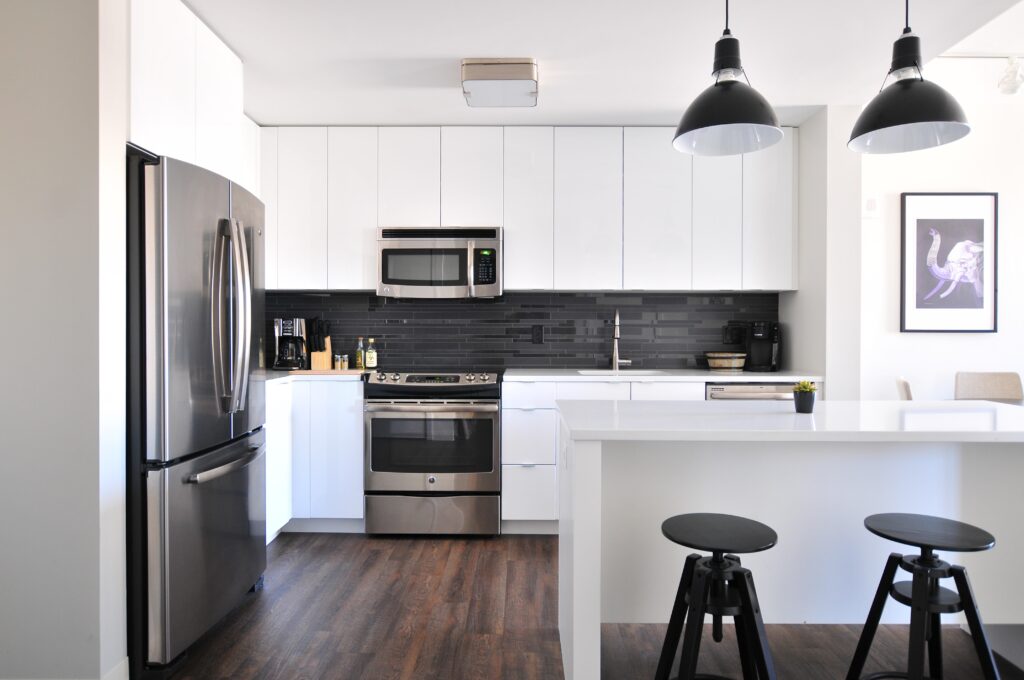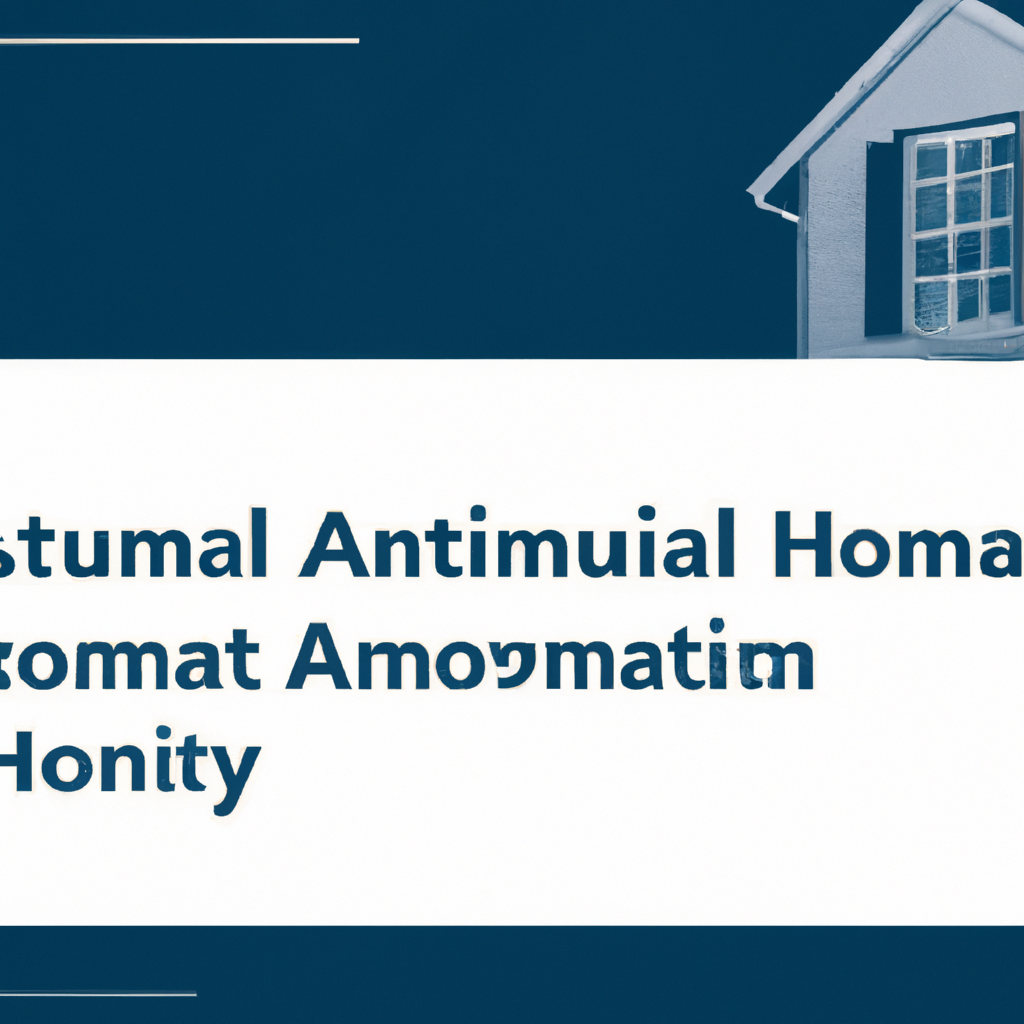Imagine having the power to protect your home and loved ones with just a few taps on your smartphone. With the advancements in smart home automation, you can now enjoy an array of security benefits that will bring you peace of mind like never before. From remotely monitoring your property to deterring potential intruders, this article explores how embracing smart home technology can revolutionize the way you safeguard your most valuable assets. So, get ready to discover the next level of home security that will make you feel confident and in control, no matter where you are.

Enhanced Surveillance and Monitoring
Remote video monitoring
With smart home automation, you can have peace of mind knowing that you can monitor your home from anywhere in the world. Remote video monitoring allows you to access live video feeds from your security cameras through your smartphone or tablet. This means that even if you are on vacation or at work, you can always keep an eye on your property. Whether you want to check in on your kids, see who is at the front door, or simply want to ensure that everything is secure, remote video monitoring provides an excellent tool for enhanced surveillance.
Activity alerts and notifications
Imagine receiving a notification on your phone whenever someone enters or leaves your home. With smart home automation, this is a reality. Activity alerts and notifications can be set up to let you know when doors are opened, windows are broken, or motion is detected. This is particularly useful for keeping track of the comings and goings in your house, ensuring that you are always aware of any suspicious or unexpected activity. By receiving instant alerts, you can take action immediately and address any potential security concerns.
Integration with security cameras
Another significant advantage of smart home automation is the integration with security cameras. By connecting your security cameras to your smart home system, you can gain even greater control and flexibility in monitoring your property. You can set up rules and schedules to automatically activate or deactivate your cameras, ensuring that your home is always under surveillance when needed. Integration with security cameras provides a comprehensive and reliable security solution, giving you valuable insights into any potential threats to your home.
Deterrence and Prevention
Visible home security measures
One of the most effective deterrents against home invasions is the presence of visible home security measures. Smart home automation allows you to showcase your security system, deterring potential burglars and criminals. From security cameras to motion sensor lights and video doorbells, the visual display of these devices sends a clear message that your home is protected. By investing in visible home security measures, you greatly reduce the likelihood of a break-in, as criminals are more likely to target homes with less apparent security.
Smart locks and keyless entry
Traditional locks can be vulnerable to picking and lock bumping, making them less secure. With smart locks and keyless entry systems, you can enhance the security of your home significantly. Smart locks eliminate the need for physical keys and allow you to lock and unlock your doors remotely through your smartphone. This means that you can ensure your doors are always locked, even if you forgot to do so before leaving. Additionally, you can grant temporary or permanent access codes to family members, friends, or service providers, eliminating the need for spare keys and reducing the risk of unauthorized entry.
Automated lighting and motion sensors
A well-lit home can discourage potential intruders and create the illusion that someone is always present. Smart home automation enables you to automate your lighting and integrate it with motion sensors. By doing so, your lights can automatically turn on when motion is detected, giving the impression that someone is moving around the house. This can be particularly beneficial when you are away on vacation or during the evenings when you want your home to appear occupied. Automated lighting combined with motion sensors provides an effective deterrent and prevents burglars from targeting your home.
Immediate Emergency Response
Smart smoke and carbon monoxide detectors
When it comes to home security, immediate response to emergencies is crucial. Smart home automation allows for the integration of smoke detectors and carbon monoxide detectors with your smart system. In the event that smoke or carbon monoxide is detected, you will receive instant notifications on your phone, allowing you to take appropriate action. Whether it is alerting the fire department or evacuating your home, smart smoke and carbon monoxide detectors can save lives by providing early warnings and ensuring a rapid response to these potentially life-threatening situations.
Intrusion alarms and panic buttons
Intrusion alarms and panic buttons are essential components of any comprehensive home security system. By integrating these features with smart home automation, you gain the ability to activate and deactivate your alarms remotely. In the case of an emergency or a perceived threat, you can easily trigger the panic button to alert both your loved ones and the authorities. Smart home automation simplifies the process of emergency response, ensuring that help arrives quickly.
Integration with emergency services
Smart home automation systems can be integrated with emergency services, further enhancing the immediate response to emergencies. In the event of a security breach or a medical emergency, your smart system can automatically alert the appropriate authorities, expediting their response and reducing the time it takes for help to arrive. This integration with emergency services provides an extra layer of protection and can be especially useful when you are unable to call for help yourself.
Secure Access Control
Biometric authentication
Traditional keys and access codes can be lost, forgotten, or even duplicated, compromising the security of your home. Smart home automation offers futuristic access control methods such as biometric authentication. By using your fingerprints, facial recognition, or even voice recognition, you can ensure that only authorized individuals can access your home. Biometric authentication provides a higher level of security, as these unique identifiers cannot be easily replicated or stolen.
Virtual keys and access codes
Virtual keys and access codes offer a convenient and secure alternative to traditional keys. With smart home automation, you can grant access to your home remotely by sharing virtual keys or access codes via your smartphone. This means that you can provide temporary access to housekeepers, pet sitters, or contractors, and revoke their access once their services are no longer required. Virtual keys and access codes eliminate the need for physical keys, reducing the risk of loss or unauthorized duplication.
Automated access logs
Keeping track of who enters and exits your home can be challenging, especially if you have a busy household or frequently have visitors. Smart home automation simplifies this process by automatically generating access logs. These logs can provide a detailed record of the time, date, and individuals who accessed your home. This feature can be particularly useful if you suspect unauthorized entry or if you need to review access patterns for security purposes. Automated access logs enhance security by providing real-time visibility and accountability for access to your home.

Reduced Risk of Home Invasion
Smart doorbells and intercom systems
Smart doorbells and intercom systems revolutionize the way we interact with visitors at our front doors. With a smart doorbell, you can see and speak to anyone at your door, even when you are not home. This gives the appearance that you are present and attentive to anyone who approaches your home. Additionally, smart doorbells often include built-in cameras, allowing you to record videos of visitors and potential intruders. By using a combination of video surveillance and two-way audio communication, smart doorbells greatly reduce the risk of home invasion by deterring criminals and providing evidence in case of a break-in.
Two-way audio communication
Two-way audio communication is a fundamental feature of smart home security systems. By connecting your intercom system or doorbell to your smart home automation, you can communicate with visitors at your door from anywhere in your home or even remotely. This provides an extra layer of security, as you can verify a visitor’s identity before granting them access or alerting the authorities if necessary. Two-way audio communication ensures that you never have to compromise your safety when dealing with unexpected visitors.
Integration with security systems
Integrating smart doorbells and intercom systems with your broader security system offers an additional level of protection against home invasion. By combining these devices with motion sensors, alarms, and video surveillance, you create a comprehensive security solution that can detect and deter intruders. For example, if a motion sensor detects movement near your front door, it can trigger your smart doorbell to display a warning message or even sound an alarm. Integration with security systems allows for a cohesive and effective defense against home invasion.
Enhanced Physical Security
Automated home locking systems
Traditional locks rely on physical keys and human memory to ensure that your doors are locked securely. However, human error can lead to unintentionally leaving doors unlocked, compromising your home’s security. Smart home automation solves this problem by providing automated home locking systems. With this feature, you can set specific schedules or rules for your doors to lock automatically at designated times or when certain conditions are met. Whether you are going to bed or leaving for work, you can have peace of mind knowing that your doors are securely locked without any effort required.
Window and door sensors
The windows and doors of your home are common entry points for intruders. Smart home automation offers window and door sensors that can detect whether they are open, closed, or even tampered with. If a sensor detects an unauthorized entry or any unusual activity, you will receive immediate notifications, allowing you to respond swiftly. Window and door sensors provide an added layer of physical security, ensuring that you are aware of any attempts to breach your home’s defenses.
Remote monitoring of entry points
Being able to monitor the status of your entry points remotely is a key advantage of smart home automation. By connecting your window and door sensors to your smart system, you can check the status of each entry point through your smartphone or tablet. This allows you to verify that all doors and windows are securely closed and locked, even when you are away from home. Remote monitoring of entry points provides peace of mind and enables you to take action if any security vulnerabilities are identified.

Protection against Cyber Attacks
Secure network infrastructure
Smart home automation relies on a network infrastructure to connect various devices and systems. To protect against cyber attacks, it is crucial to ensure that your network infrastructure is secure. This includes having a strong password for your Wi-Fi network, enabling encryption protocols, and regularly updating your router firmware. By implementing these security measures, you can minimize the risk of unauthorized access to your smart devices and protect your home automation system from cyber threats.
Encrypted communication protocols
Secure communication between your smart home devices and your central control system is paramount to prevent data breaches and unauthorized control. Smart home automation systems use encrypted communication protocols such as SSL/TLS to ensure that data transmitted between devices remains confidential and secure. By employing these protocols, your smart home automation system can protect against intercepting, tampering, and unauthorized access to your sensitive information.
Regular software updates
Manufacturers regularly release software updates for their smart home devices to address security vulnerabilities and enhance overall performance. Updating your smart home automation system to the latest software versions is crucial for maintaining its security. These updates often include patches that address newly discovered vulnerabilities, ensuring that your system remains protected against emerging cyber threats. By prioritizing and regularly installing software updates, you can actively mitigate the risk of cyber attacks and safeguard your smart home.
Safe Data and Privacy Measures
Secure cloud storage
Smart home automation often involves the use of cloud storage to store data such as video footage, access logs, and security settings. To ensure the safety and privacy of your data, it is essential to choose a reputable and secure cloud service provider. Secure cloud storage employs encryption and robust security measures to protect your data from unauthorized access. By utilizing secure cloud storage, you can confidently store and access your smart home data without compromising your privacy.
Privacy settings and user permissions
Maintaining control over your data and privacy is crucial in a smart home automation environment. Smart home systems offer customizable privacy settings and user permissions, allowing you to define who has access to your data and how it is used. You can determine which devices or individuals can access certain features, giving you full control over your smart home automation system. By utilizing privacy settings and user permissions, you can tailor your smart home system to meet your specific privacy requirements.
Data encryption and protection
Smart home automation involves the collection and transmission of sensitive data such as video recordings, access logs, and personal information. To protect this data from unauthorized access, it is essential to employ data encryption and protection measures. Encryption ensures that data is transformed into an unreadable format, making it inaccessible to unauthorized individuals. By implementing strong encryption protocols and security measures, your smart home automation system can keep your data secure and protected from potential threats.

Mitigation of Property Damage
Automated shut-off valves
Leakage and flooding can cause significant property damage if left undetected or unaddressed. Smart home automation can mitigate these risks by providing automated shut-off valves for water supply lines. In the event of a water leak or abnormal water flow, these valves can automatically shut off the water supply, preventing further damage. By detecting potential leaks and taking immediate action, smart home automation can help protect your home from costly water damage and the associated repair expenses.
Smart leak detectors
Smart leak detectors are another valuable component of home security systems. These devices are designed to detect the presence of water or moisture in areas prone to leaks, such as basements, bathrooms, or laundry rooms. When a leak is detected, you will receive notifications on your smartphone, allowing you to take immediate action. Smart leak detectors can help prevent property damage caused by leaks, floods, or even pipe bursts, ensuring that you can address the issue before it escalates.
Integration with weather monitoring
Severe weather conditions can pose a threat to the safety and security of your home. Smart home automation allows for the integration of weather monitoring devices, which can provide real-time weather updates and alerts. By receiving notifications about extreme temperatures, high winds, or approaching storms, you can take preventive measures to protect your property. Integration with weather monitoring enables you to prepare for potential property damage and ensures that your smart home automation system can proactively respond to changing weather conditions.
Insurance Premium Discounts
Risk reduction for insurers
Smart home automation offers a significant risk reduction for insurers. By implementing advanced security measures, homeowners demonstrate a proactive approach to home security and risk prevention. This reduces the likelihood of property damage, theft, and other security-related incidents. Insurance companies view smart home automation as a valuable investment that reduces the risk of insurance claims, leading to fewer payouts and potential savings for insurers.
Smart home security requirements
As smart home automation becomes increasingly popular, insurance companies are starting to require certain security measures as a prerequisite for policy coverage. This may include having a monitored security system, smart locks, or surveillance cameras. By meeting these requirements, homeowners can enjoy the benefits of enhanced home security while also potentially qualifying for insurance coverage discounts. Smart home security requirements provide a win-win situation, ensuring that homeowners have adequate security measures in place while rewarding them with potential financial savings.
Financial incentives for homeowners
Insurance companies recognize the value and impact of smart home automation on home security. To encourage homeowners to invest in these technologies, insurers often offer financial incentives such as lower insurance premiums or discounts. By adopting smart home automation and meeting the recommended security standards, homeowners can qualify for these incentives, enjoying reduced insurance costs and improved affordability. Financial incentives provide a tangible benefit for homeowners, making the decision to implement smart home automation even more appealing.
In conclusion, the security benefits of implementing smart home automation are extensive and comprehensive. Enhanced surveillance and monitoring, deterrence and prevention, immediate emergency response, secure access control, reduced risk of home invasion, enhanced physical security, protection against cyber attacks, safe data and privacy measures, mitigation of property damage, and potential insurance premium discounts are all valuable advantages that come with adopting smart home automation. By embracing these technologies and incorporating them into your home, you can create an environment that is safer, more secure, and better equipped to respond to potential security threats.











